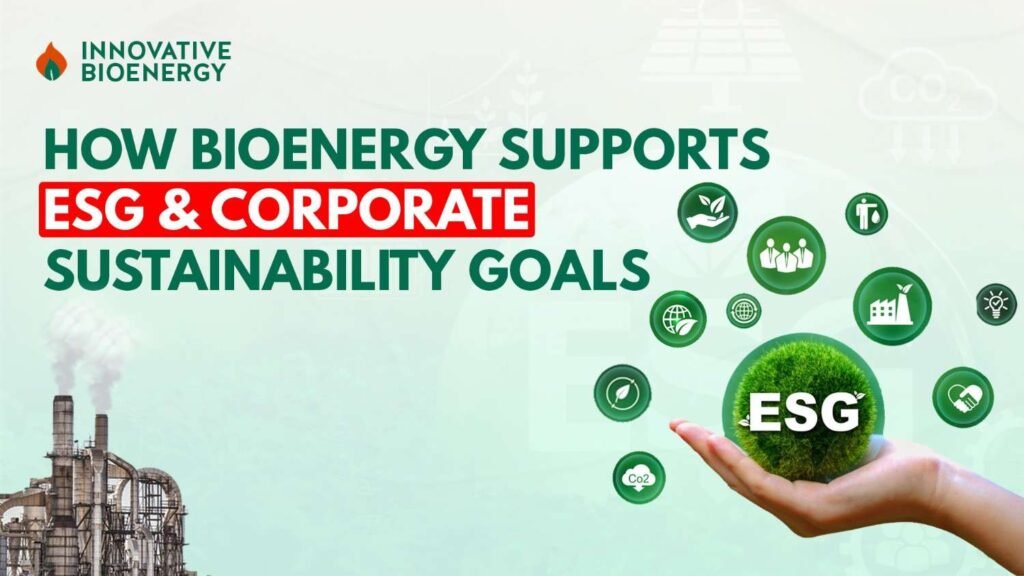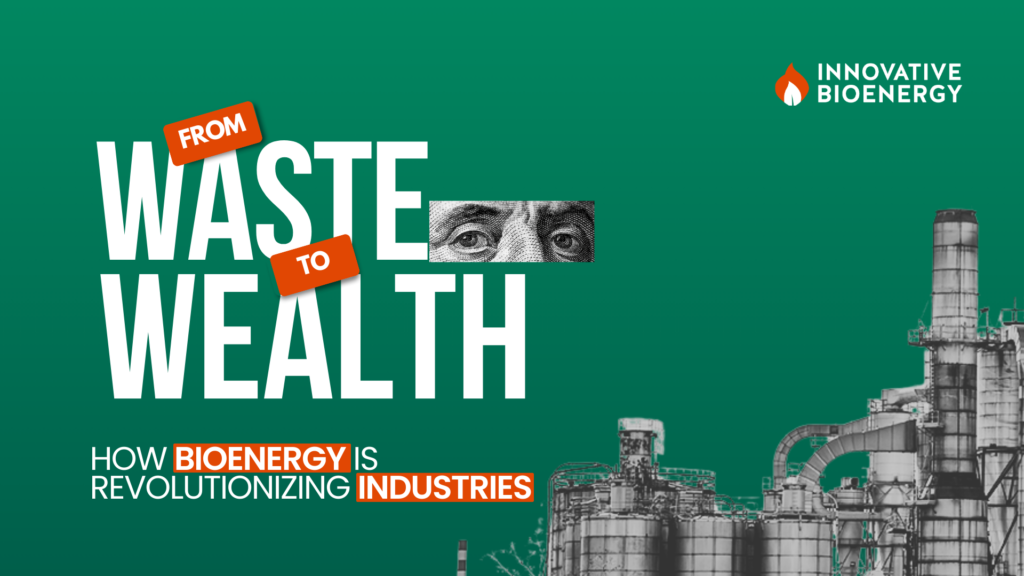In today’s rapidly evolving sustainability landscape, businesses face increasing pressure to meet Environmental, Social, and Governance (ESG) criteria while moving away from fossil fuels. With climate regulations tightening and stakeholders demanding accountability, companies are seeking solutions that are both environmentally responsible and economically viable.
This is where Innovative Bioenergy steps in, a pioneering brand in the bioenergy sector dedicated to helping organizations transition to cleaner, circular energy systems. Derived from organic materials, bioenergy offers a renewable, carbon-neutral alternative to fossil fuels, enabling companies to reduce emissions, promote circular economies, and enhance social impact.
This article explores in detail how bioenergy supports ESG principles, drives sustainable growth, and aligns with global climate targets. For broader context on how bioenergy is shaping climate strategies, read our article on The Impact of Bioenergy on Global Climate Goals.
What Is Bioenergy? Understanding Its Role in Sustainability
Bioenergy is energy generated from biomass, organic matter such as agricultural residues, forestry byproducts, and organic waste. Unlike fossil fuels, bioenergy operates within a closed carbon cycle, meaning the CO2 emitted during energy production is offset by the CO2 absorbed during biomass growth, making it a carbon-neutral energy source.
Modern bioenergy technologies include:
- Anaerobic digestion producing biogas
- Thermal gasification converting biomass into syngas
- Combustion of sustainably sourced wood pellets
These methods deliver reliable, renewable energy while minimizing environmental impact.
How Bioenergy Advances ESG Goals
Environmental Impact: Reducing Carbon Footprint and Waste
Carbon Emission Reduction: Bioenergy replaces fossil fuels, cutting greenhouse gas emissions significantly. It supports net-zero emissions targets by reducing scope 1 and 2 emissions in corporate operations.
Waste-to-Energy Circularity: By converting agricultural waste and organic residues into energy, bioenergy promotes a circular bioeconomy, reducing landfill use and methane emissions from waste decomposition.
Sustainable Land Use: When sourced responsibly, biomass encourages sustainable forestry and agricultural practices, preserving biodiversity and soil health.
Social Benefits: Empowering Communities and Enhancing Energy Security
Job Creation and Local Economy: Bioenergy projects generate employment in rural and agricultural communities, supporting social equity and economic development.
Energy Access and Security: Utilizing local biomass reduces dependence on imported fossil fuels, enhancing energy resilience and affordability for communities.
Governance: Transparency, Compliance, and ESG Reporting
Regulatory Compliance: Companies adopting bioenergy demonstrate leadership by meeting stringent environmental regulations and carbon reporting standards.
Investor Confidence: Transparent ESG reporting on bioenergy initiatives attracts sustainability-focused investors and improves corporate reputation.
Bioenergy and Corporate Sustainability Goals: Tangible Benefits
Achieving Net Zero and Climate Targets: Bioenergy, especially when combined with Bioenergy with Carbon Capture and Storage (BECCS), offers pathways to negative emissions, crucial for meeting the Paris Agreement goals.
Cost Efficiency and Operational Stability: Bioenergy reduces exposure to fossil fuel price volatility and provides a continuous, reliable energy supply.
Supporting UN Sustainable Development Goals (SDGs): Bioenergy contributes directly to SDG 7 (Affordable and Clean Energy), SDG 12 (Responsible Consumption and Production), and SDG 13 (Climate Action).
Real-World Corporate Bioenergy Success Stories
- Heineken Indonesia: Uses 100% agricultural waste for steam generation, cutting 48,000 tCO2e annually.
- Danone Indonesia: Reduced carbon emissions by 5,800 tCO2e/year through biomass steam generation.
- Veolia Group (Hungary): Transitioned coal boilers to biomass, producing 600+ GWh of renewable electricity, advancing decarbonization.
Best Practices for Implementing Bioenergy in Corporate Sustainability Strategies
- Prioritize Local and Sustainable Biomass Sourcing: Minimize transportation emissions and support local economies by sourcing biomass regionally.
- Invest in Advanced Bioenergy Technologies: Utilize efficient conversion methods like gasification and anaerobic digestion for higher energy yield and lower emissions.
- Integrate Bioenergy with Circular Bioeconomy Models: Use biomass residues and byproducts to create fertilizers or bio-based materials, enhancing resource efficiency.
- Implement Robust ESG Reporting: Track and disclose bioenergy’s environmental and social impacts transparently to meet investor and regulatory expectations.
- Balance Land Use and Food Security: Ensure biomass production does not compete with food crops or degrade ecosystems by following sustainability certification standards.
Conclusion
Bioenergy is a cornerstone for companies striving to meet ESG and corporate sustainability goals. It offers a scalable, carbon-neutral energy solution that reduces emissions, supports local communities, and strengthens governance through transparent ESG reporting.
Innovative Bioenergy enables businesses to achieve these goals with biomass solutions, such as wood pellets and wood briquettes, tailored to meet the needs of both industrial and commercial applications. By embracing sustainable energy and technologies like BECCS, companies can accelerate their journey toward net zero, drive circular economy principles, and gain a competitive advantage in the evolving green economy.



